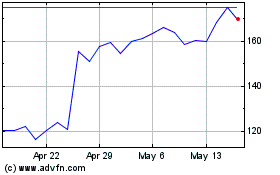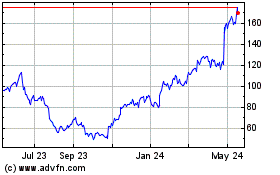UNITED STATES
SECURITIES AND EXCHANGE COMMISSION
Washington, D.C. 20549
FORM SD
SPECIALIZED DISCLOSURE REPORT
Impinj, Inc.
(Exact name of registrant as specified in its charter)
|
|
|
|
|
Delaware |
|
001-37824 |
|
91-2041398 |
(State or other jurisdiction of incorporation or organization) |
|
(Commission File Number) |
|
(I.R.S Employer Identification No.) |
400 Fairview Avenue North, Suite 1200
Seattle, Washington 98109
(Address of principal executive offices, including zip code)
Cary Baker, Chief Financial Officer
(206) 517-5300
(Name and telephone number, including area code, of the person to contact in connection with this report.)
Check the appropriate box to indicate the rule pursuant to which this Form is being submitted, and provide the period to which the information in this Form applies:
|
|
☒ |
Rule 13p-1 under the Securities Exchange Act (17 CFR 240.13p-1) for the reporting period from January 1 to December 31, 2023. |
|
|
☐ |
Rule 13q-1 under the Securities Exchange Act (17 CFR 240.13q-1) for the fiscal year ended December 31, 2023. |
Section 1 — Conflict Minerals Disclosure
Item 1.01 Conflict Minerals Disclosure and Report
Conflict Minerals Disclosure
The Conflict Minerals Report of Impinj, Inc. for the calendar year ended December 31, 2023, is filed herewith as Exhibit 1.01, and is publicly available at investor.impinj.com. The content of our website as referred to in this Form SD is included for general information only and is not incorporated by reference into this Form SD.
Item 1.02 Exhibit
The Conflict Minerals Report required by Item 1.01 is filed as Exhibit 1.10 of this Form SD.
Section 2 — Resource Extraction Issuer Disclosure
Item 2.01 Resource Extraction Issuer Disclosure and Report
Not applicable.
Section 3 — Exhibits
Item 3.01 Exhibits
SIGNATURES
Pursuant to the requirements of the Securities Exchange Act of 1934, the registrant has duly caused this report to be signed on its behalf by the undersigned hereunto duly authorized.
|
|
|
|
|
|
Impinj, Inc. |
|
|
By: |
|
/s/ Cary Baker |
|
|
Cary Baker Chief Financial Officer |
Date: October 16, 2024
Exhibit 1.01
Impinj, Inc.
Conflict Minerals Report
For the Reporting Period from January 1, 2023 to December 31, 2023
Part I. Introduction
This Conflict Minerals Report of Impinj, Inc. for the reporting period January 1, 2023 to December 31, 2023 (the “Reporting Period”)has been prepared in accordance with Rule 13p-1 and Form SD promulgated under the Securities Exchange Act of 1934, as amended (the “Exchange Act”).
Rule 13p-1 requires disclosure of certain information when a company manufactures or contracts to manufacture products where the minerals specified in Rule 13p-1 necessary to the functionality or production of those products. The specified minerals are referred to as “Conflict Minerals,” which include columbite-tantalite (coltan), cassiterite, gold, wolframite or their derivatives, which are limited to tantalum, tin and tungsten. The “Covered Countries” for purposes of Rule 13p-1and this report are the Democratic Republic of Congo, or any adjoining country.
This report and Form SD can be found on our website at investor.impinj.com.
Part II. Company Overview
We are a leading provider of RAIN RFID solutions that, together with our partner ecosystem, designs, develops, manufactures, and markets RAIN endpoint and reader integrated circuits, reader and gateway, and test and measurement products (“Covered Products”). We outsource most of our manufacturing of Covered Products to third parties that build to our specifications. We directly manufacture a limited portion of our Covered Products, principally components to some of our test and measurement solutions. We are aware that certain Covered Products contain tin, tantalum, tungsten and gold metals that may be necessary to the functionality or production of those products. We have determined, in good faith, that, for the Reporting Period, the Covered Products require tungsten, tin, tantalum and gold for their production or functionality. To this end, we work with our suppliers to identify the sources of such metals used in the Covered Products. If any of these metals originate from the Covered Countries, then further investigation is required.
We have also adopted a Conflict Minerals Policy and require our suppliers to acknowledge and comply with this policy. If a supplier indicates any noncompliance, we work to quickly investigate and appropriately remediate the matter. Our Conflict Minerals Policy can be found on our website at investor.impinj.com.
Part III. Reasonable Country of Origin Inquiry
We have taken steps to conduct in good faith a reasonable country of origin inquiry (“Inquiry”) with respect to the Covered Products that we manufactured or contracted to be manufactured during the Reporting Period. The Inquiry is reasonably designed to determine if any of the Conflict Minerals in the Covered Products originated in the Covered Countries or are from recycled or scrap sources. We have:
•adopted a Conflict Minerals Policy;
•identified and surveyed our suppliers using the Conflict Minerals Reporting Template (“CMRT”), a standardized reporting template created by the Responsible Minerals Initiative (“RMI”), and identified those suppliers from which we purchase components that contain (or may contain) Conflict Minerals;
oreviewed and evaluated the responses that we received from such suppliers for completeness and accuracy;
oconducted necessary follow-up communications with such suppliers when the information provided appeared to be incomplete and when such suppliers failed to respond within a reasonable period of time;
•evaluated the Covered Products to determine if Conflict Minerals are necessary to the functionality or production of those products; and
•created processes to (i) determine the country of origin for the Covered Products which were found to contain Conflict Minerals and (ii) identify the use of Conflict Minerals used in new product designs.
We regularly conduct these measures and survey our suppliers using the CMRT for the Covered Products, in addition to newly developed products.
As described in Part IV below, we undertook additional due diligence measures to determine if the Conflict Minerals used in the Covered Products originated in the Covered Countries.
Part IV. Due Diligence
Based on the information provided to us by our suppliers, we undertook additional due diligence processes and efforts based on the RMI in order to determine if any Conflict Materials included in our Covered Products may have originated in the Covered Countries.
We performed the following due diligence measures:
•established a risk management system to support our ongoing efforts to identify, assess and respond to risks in our supply chain;
•engaged external advisers to assist and consult on our Conflict Minerals due diligence and reporting process;
•surveyed our external suppliers for information concerning whether Conflict Minerals are necessary to the functionality or production of our products and the source and chain of custody of any Conflict Minerals in our supply chain;
•communicated with suppliers, directly or through third-party partners, to determine the source of the Conflict Minerals for the Covered Products; and
•monitored, directly or in partnership with third-party providers, the progress of responses, and related follow-up procedures, to internal and external surveys, regarding the use of Conflict Minerals.
Part V. Due Diligence Results
During the Reporting Period, we required our suppliers to perform and report on their supply chain due diligence through the CMRT. For any suppliers that were unresponsive, we performed multiple follow-ups and proactively followed-up via email and/or telephone with such suppliers. We relied on our direct suppliers to provide us with the necessary information about the source of Conflict Minerals contained in the Covered Products that they manufactured for us. Our suppliers similarly relied on their suppliers to provide information regarding the country of origin of Conflict Minerals that were included in the Covered Products. There is a risk that the final information provided to us and upon which we relied was incomplete or inaccurate. Based on the information provided to us by our suppliers, we believe that, to the extent reasonably determinable, the Conflict Minerals necessary for the functionality or production used in the Covered Products were not sourced from Covered Countries.
Part VI. Risk Mitigation / Future Due Diligence Measures
We have communicated our expectations to our suppliers regarding our commitment to sourcing minerals for our products in a manner that does not finance or benefit armed groups in the Covered Countries. We plan to continue our Inquiry method to collect and report on conflict minerals due diligence activities. We also continue to work with our suppliers to improve the quality and completeness of information provided by continuing to review our supplier responses, and provide feedback as necessary. We encourage our suppliers to remain committed to conflict-free sources and engage with our relevant suppliers in order to build their knowledge and capacity so they are able to provide us with complete and accurate information on the source and chain of custody of Conflict Minerals in our supply chain.
Forward-looking Statements
This report may contain forward-looking statements within the meaning of Section 27A of the Securities Act of 1933, as amended, and Section 21E of the Exchange Act of 1934. These forward-looking statements include, but are not limited to, statements regarding our policies and practices with respect to Conflict Minerals and our related due diligence initiatives. Forward-looking statements may be identified by the use of the words “anticipates,” “expects,” “intends,” “plans,” “should,” “could,” “would,” “may,” “will,” “believes,” “estimates,” “potential,” “target,” “opportunity,” “tentative,” “positioning,” “designed,” “create,” “predict,” “project,” “seek,” “ongoing,” “upside,” “increases” or “continue” and variations or similar expressions and phrases. These statements are based upon the
current expectations and beliefs of management and are provided for the purpose of providing additional information about such expectations and beliefs, and readers are cautioned that these statements may not be appropriate for other purposes. These forward-looking statements are subject to numerous assumptions, risks and uncertainties that change over time and could cause actual results to differ materially from those described in the forward-looking statements. These assumptions, risks and uncertainties include, but are not limited to, assumptions, risks and uncertainties discussed in our most recent annual or quarterly report filed with the Securities and Exchange Commission (the “SEC”) and the other assumptions, risks and uncertainties as detailed from time to time in our filings with the SEC, which assumptions, risks and uncertainties are incorporated herein by reference. We believe that the material factors and assumptions reflected in these forward-looking statements are reasonable in the circumstances, but readers are cautioned not to place undue reliance on any of these forward-looking statements. These forward-looking statements speak only as of the date hereof. We undertake no obligation to update any of these forward-looking statements to reflect events or circumstances after the date of this report or to reflect actual outcomes, except as required by law.
Impinj (NASDAQ:PI)
Historical Stock Chart
From Dec 2024 to Jan 2025

Impinj (NASDAQ:PI)
Historical Stock Chart
From Jan 2024 to Jan 2025
